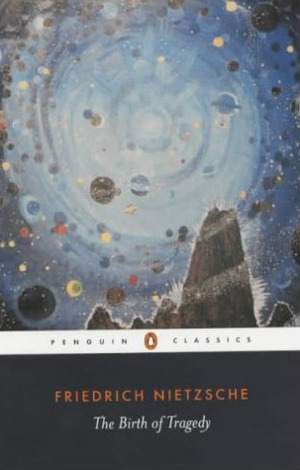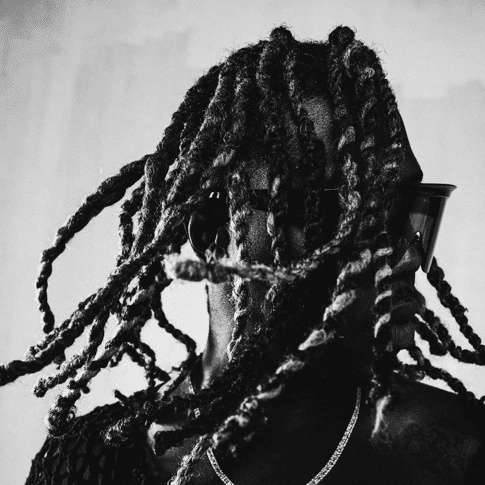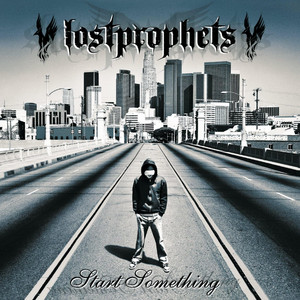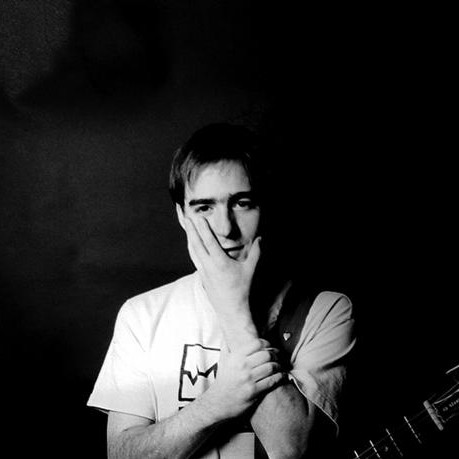
The Birth of Tragedy (Chap. 8) Friedrich Nietzsche
На этой странице вы найдете полный текст песни "The Birth of Tragedy (Chap. 8)" от Friedrich Nietzsche. Lyrxo предлагает вам самый полный и точный текст этой композиции без лишних отвлекающих факторов. Узнайте все куплеты и припев, чтобы лучше понять любимую песню и насладиться ею в полной мере. Идеально для фанатов и всех, кто ценит качественную музыку.

The satyr as well as the idyllic shepherd of our more recent times are both the epitomes of a longing directed toward the primordial and natural, but with what a firm, fearless grip the Greek held onto his man from the woods, and how timidly and weakly modern man toys with the flattering image of a delicate and gentle flute-playing shepherd! Nature on which no knowledge had yet worked, in which the walls of culture had still not been thrown up — that’s what the Greek saw in his satyr, and so he did not yet mistake him for an ape. Quite the contrary: the satyr was the primordial image of man, the expression of his highest and strongest emotions, as an inspired reveller, enraptured by the approach of the god, as a sympathetic companion, in whom the suffering of the god was repeated, as a messenger bringing wisdom from the deepest heart of nature, as a perceptible image of the sexual omnipotence of nature, which the Greek was accustomed to observing with reverent astonishment.
The satyr was something sublime and divine: that’s how he must have seemed especially to the painfully broken gaze of the Dionysian man, who would have been insulted by our well-groomed fictitious shepherd. His eye lingered with sublime satisfaction on the exposed, vigorous, and magnificent script of nature; here the illusion of culture was wiped away by the primordial image of man; here the real man revealed himself, the bearded satyr, who cried out with joy to his god. In comparison with him, the man of culture was reduced to a misleading caricature. Schiller was also right about the start of tragic art: the chorus is a living wall against the pounding reality, because it — the
satyr chorus — presents existence more genuinely, more truly, and more completely than does the
civilized person, who generally considers himself the only reality.
The sphere of poetry does not lie beyond this world as a fantastic impossibility of a poet’s brain; it wants to be exactly the opposite, the unadorned expression of the truth, and it must therefore simply cast off the false costume of that alleged truth of the man of culture. The contrast between this real truth of nature and the cultural lie which behaves as if it is the only reality is similar to the contrast between the eternal core of things, the thing-in-itself, and the total world of appearances. And just as tragedy, with its metaphysical consolation, draws attention to the eternal life of that existential core in the continuing destruction of appearances, so the symbolism of the satyr chorus already expresses metaphorically that primordial relationship between the thing-in-itself and appearance. That idyllic shepherd of modern man is only a counterfeit, the totality of cultural illusions which he counts as nature. The Dionysian Greek wants truth and nature in their highest power — he sees himself magically changed into the satyr.
The enraptured horde of those who served Dionysus rejoiced under such moods and insights, whose power transformed them even before their very eyes, so that they imagined they saw themselves as restored natural geniuses, as satyrs. The later constitution of the tragic chorus is the artistic imitation of that natural phenomenon, in which now a division was surely necessary between the Dionysian spectators and those under the Dionysian enchantment. But we must always remind ourselves that the public for Attic tragedy rediscovered itself in the chorus of the orchestra, that basically there was no opposition between the public and the chorus: for everything is only a huge sublime chorus of dancing and singing satyrs or of those people who permit themselves to be represented by these satyrs.1
That saying of Schlegel’s here must become accessible to us in a deeper sense. The chorus is the “ideal spectator,” insofar as it is the single onlooker, the person who sees the visionary world of the scene. A public of spectators, as we are familiar with it, was unknown to the Greeks. In their theatre, given the way the spectators’ space was built up in terraces of concentric rings, it was possible for everyone quite literally to look out over the collective cultural world around him and in that complete perspective to imagine himself a member of the chorus. Given this insight, we can call the chorus, in its primitive stages of the prototypical tragedy, the self-reflection of the Dionysian man, a phenomenon which we can make out most clearly in the experience of the actor, who, if he is really gifted, sees perceptibly in front of him the image of the role he has to play, hovering before his eyes, there for him to grasp.
The satyr chorus is, first and foremost, a vision of the Dionysian mass, just as, in turn, the world of the stage area is a vision of this satyr chorus: the power of this vision is strong enough to dull and desensitize the impression of “reality,” the sight of the cultured people ranged in their rows of seats all around. The form of the Greek theatre is a reminder of a solitary mountain valley: the architecture of the scene appears as an illuminated picture of a cloud, which the Bacchae swarming around in the mountains gaze upon from on high, as the majestic setting in the middle of which the image of Dionysus is revealed to them.1
This primitive artistic illusion, which we are putting into words here to explain the tragic chorus, is, from the perspective of our scholarly views about the basic artistic process, almost offensive, although nothing can be more obvious than that the poet is only a poet because of the fact that he sees himself surrounded by shapes which live and act in front of him and into whose innermost being he gazes. Through some peculiar weakness in our modern talent, we are inclined to imagine primitive aesthetic phenomenon in too complicated and abstract a manner. For the true poet, metaphor is not a rhetorical trope, but a representative image which really hovers in front of him in the place of an idea. For him the character is not some totality put together from individual traits collected bit by bit, but a living person, insistently there before his eyes, which differs from the similar vision of the painter only through its continued further living and acting. Why does Homer give us descriptions so much more vivid than all the poets? Because he sees so much more around him. We speak about poetry so abstractly because we all tend to be poor poets. The aesthetic phenomenon is fundamentally simple: if someone simply possesses the capacity to see a living game going on continually and to live all the time surrounded by hordes of ghosts, then the man is a poet; if someone simply feels the urge to change himself and to speak out from other bodies and souls, then that person is a dramatist.
Dionysian excitement is capable of communicating this artistic talent to an entire multitude, so that they see themselves surrounded by such a horde of ghosts with which they know they are inwardly one. This dynamic of the tragic chorus is the original dramatic phenomenon: to see oneself transformed before one’s eyes and now to act as if one really had entered another body, another character. This process stands at the beginning of the development of drama. Here is something different from the rhapsodist, who does not fuse with his images, but, like the painter, sees them with an observing eye outside himself; in the dramatic process there is already a surrender of individuality by the entry into a strange nature. And, in fact, this phenomenon breaks out like an epidemic; an entire horde feels itself enchanted in this way.
For this reason the dithyramb is essentially different from every other choral song. The virgins who move solemnly to Apollo’s temple with laurel branches in their hands, singing a processional song as they go, remain who they are and retain their names as citizens. The dithyrambic chorus is a chorus of transformed people, for whom their civic past, their social position, is completely forgotten.2 They have become their god’s timeless servants, living beyond all regions of society. Every other choral lyric of the Greeks is only an immense intensification of the Apollonian solo singer; whereas, in the dithyramb a congregation of unconscious actors stands before us, who look upon each other as transformed.
Enchantment is the precondition for all dramatic art. In this enchantment the Dionysian reveller sees himself as a satyr, and then, in turn, as a satyr he looks at his god, that is, in his transformed state he sees a new vision outside himself as an Apollonian fulfilment of his condition. With this new vision drama is complete.
Keeping this knowledge in mind, we must understand Greek tragedy as the Dionysian chorus which over and over again discharges itself in an Apollonian world of images. Those choral passages interspersed through tragedy are thus, as it were, the maternal womb of the entire dialogue so-called, that is, of the totality of the stage word, the actual drama. This primordial basis of tragedy radiates that vision of drama out in several discharges following one after the other, a vision which is entirely a dream image and, in this respect, epic in nature, but, on the other hand, as an objectification of a Dionysian state, it presents not the Apollonian consolation in illusion, but, by contrast, the smashing of individuality and becoming one with primordial being. Thus, drama is the Apollonian embodiment of Dionysian knowledge and effects, and, hence, is separated as if by an immense gulf from epic.
This conception of ours provides a full explanation for the chorus of Greek tragedy, the symbol for the collectively aroused Dionysian multitude. While we, given what we are used to with the role of the chorus on the modern stage, especially the chorus in opera, have been totally unable to grasp how that tragic chorus of the Greeks could be older, more original, in fact, more important than the actual “action” — as tradition tells us so clearly — while we, in turn, could not figure out why, given that traditionally high importance and original preeminence, the chorus would nonetheless be put together only out of lowly serving creatures, in fact, at first only out of goat-like satyrs, and while for us the orchestra in front of the acting area remained a constant enigma, now we have come to the insight that the acting area, together with the action, was basically and originally thought of only as a vision, that the single “reality” is simply the chorus, which creates the vision out of itself and speaks of that with the entire symbolism of dance, tone, and word.
The satyr was something sublime and divine: that’s how he must have seemed especially to the painfully broken gaze of the Dionysian man, who would have been insulted by our well-groomed fictitious shepherd. His eye lingered with sublime satisfaction on the exposed, vigorous, and magnificent script of nature; here the illusion of culture was wiped away by the primordial image of man; here the real man revealed himself, the bearded satyr, who cried out with joy to his god. In comparison with him, the man of culture was reduced to a misleading caricature. Schiller was also right about the start of tragic art: the chorus is a living wall against the pounding reality, because it — the
satyr chorus — presents existence more genuinely, more truly, and more completely than does the
civilized person, who generally considers himself the only reality.
The sphere of poetry does not lie beyond this world as a fantastic impossibility of a poet’s brain; it wants to be exactly the opposite, the unadorned expression of the truth, and it must therefore simply cast off the false costume of that alleged truth of the man of culture. The contrast between this real truth of nature and the cultural lie which behaves as if it is the only reality is similar to the contrast between the eternal core of things, the thing-in-itself, and the total world of appearances. And just as tragedy, with its metaphysical consolation, draws attention to the eternal life of that existential core in the continuing destruction of appearances, so the symbolism of the satyr chorus already expresses metaphorically that primordial relationship between the thing-in-itself and appearance. That idyllic shepherd of modern man is only a counterfeit, the totality of cultural illusions which he counts as nature. The Dionysian Greek wants truth and nature in their highest power — he sees himself magically changed into the satyr.
The enraptured horde of those who served Dionysus rejoiced under such moods and insights, whose power transformed them even before their very eyes, so that they imagined they saw themselves as restored natural geniuses, as satyrs. The later constitution of the tragic chorus is the artistic imitation of that natural phenomenon, in which now a division was surely necessary between the Dionysian spectators and those under the Dionysian enchantment. But we must always remind ourselves that the public for Attic tragedy rediscovered itself in the chorus of the orchestra, that basically there was no opposition between the public and the chorus: for everything is only a huge sublime chorus of dancing and singing satyrs or of those people who permit themselves to be represented by these satyrs.1
That saying of Schlegel’s here must become accessible to us in a deeper sense. The chorus is the “ideal spectator,” insofar as it is the single onlooker, the person who sees the visionary world of the scene. A public of spectators, as we are familiar with it, was unknown to the Greeks. In their theatre, given the way the spectators’ space was built up in terraces of concentric rings, it was possible for everyone quite literally to look out over the collective cultural world around him and in that complete perspective to imagine himself a member of the chorus. Given this insight, we can call the chorus, in its primitive stages of the prototypical tragedy, the self-reflection of the Dionysian man, a phenomenon which we can make out most clearly in the experience of the actor, who, if he is really gifted, sees perceptibly in front of him the image of the role he has to play, hovering before his eyes, there for him to grasp.
The satyr chorus is, first and foremost, a vision of the Dionysian mass, just as, in turn, the world of the stage area is a vision of this satyr chorus: the power of this vision is strong enough to dull and desensitize the impression of “reality,” the sight of the cultured people ranged in their rows of seats all around. The form of the Greek theatre is a reminder of a solitary mountain valley: the architecture of the scene appears as an illuminated picture of a cloud, which the Bacchae swarming around in the mountains gaze upon from on high, as the majestic setting in the middle of which the image of Dionysus is revealed to them.1
This primitive artistic illusion, which we are putting into words here to explain the tragic chorus, is, from the perspective of our scholarly views about the basic artistic process, almost offensive, although nothing can be more obvious than that the poet is only a poet because of the fact that he sees himself surrounded by shapes which live and act in front of him and into whose innermost being he gazes. Through some peculiar weakness in our modern talent, we are inclined to imagine primitive aesthetic phenomenon in too complicated and abstract a manner. For the true poet, metaphor is not a rhetorical trope, but a representative image which really hovers in front of him in the place of an idea. For him the character is not some totality put together from individual traits collected bit by bit, but a living person, insistently there before his eyes, which differs from the similar vision of the painter only through its continued further living and acting. Why does Homer give us descriptions so much more vivid than all the poets? Because he sees so much more around him. We speak about poetry so abstractly because we all tend to be poor poets. The aesthetic phenomenon is fundamentally simple: if someone simply possesses the capacity to see a living game going on continually and to live all the time surrounded by hordes of ghosts, then the man is a poet; if someone simply feels the urge to change himself and to speak out from other bodies and souls, then that person is a dramatist.
Dionysian excitement is capable of communicating this artistic talent to an entire multitude, so that they see themselves surrounded by such a horde of ghosts with which they know they are inwardly one. This dynamic of the tragic chorus is the original dramatic phenomenon: to see oneself transformed before one’s eyes and now to act as if one really had entered another body, another character. This process stands at the beginning of the development of drama. Here is something different from the rhapsodist, who does not fuse with his images, but, like the painter, sees them with an observing eye outside himself; in the dramatic process there is already a surrender of individuality by the entry into a strange nature. And, in fact, this phenomenon breaks out like an epidemic; an entire horde feels itself enchanted in this way.
For this reason the dithyramb is essentially different from every other choral song. The virgins who move solemnly to Apollo’s temple with laurel branches in their hands, singing a processional song as they go, remain who they are and retain their names as citizens. The dithyrambic chorus is a chorus of transformed people, for whom their civic past, their social position, is completely forgotten.2 They have become their god’s timeless servants, living beyond all regions of society. Every other choral lyric of the Greeks is only an immense intensification of the Apollonian solo singer; whereas, in the dithyramb a congregation of unconscious actors stands before us, who look upon each other as transformed.
Enchantment is the precondition for all dramatic art. In this enchantment the Dionysian reveller sees himself as a satyr, and then, in turn, as a satyr he looks at his god, that is, in his transformed state he sees a new vision outside himself as an Apollonian fulfilment of his condition. With this new vision drama is complete.
Keeping this knowledge in mind, we must understand Greek tragedy as the Dionysian chorus which over and over again discharges itself in an Apollonian world of images. Those choral passages interspersed through tragedy are thus, as it were, the maternal womb of the entire dialogue so-called, that is, of the totality of the stage word, the actual drama. This primordial basis of tragedy radiates that vision of drama out in several discharges following one after the other, a vision which is entirely a dream image and, in this respect, epic in nature, but, on the other hand, as an objectification of a Dionysian state, it presents not the Apollonian consolation in illusion, but, by contrast, the smashing of individuality and becoming one with primordial being. Thus, drama is the Apollonian embodiment of Dionysian knowledge and effects, and, hence, is separated as if by an immense gulf from epic.
This conception of ours provides a full explanation for the chorus of Greek tragedy, the symbol for the collectively aroused Dionysian multitude. While we, given what we are used to with the role of the chorus on the modern stage, especially the chorus in opera, have been totally unable to grasp how that tragic chorus of the Greeks could be older, more original, in fact, more important than the actual “action” — as tradition tells us so clearly — while we, in turn, could not figure out why, given that traditionally high importance and original preeminence, the chorus would nonetheless be put together only out of lowly serving creatures, in fact, at first only out of goat-like satyrs, and while for us the orchestra in front of the acting area remained a constant enigma, now we have come to the insight that the acting area, together with the action, was basically and originally thought of only as a vision, that the single “reality” is simply the chorus, which creates the vision out of itself and speaks of that with the entire symbolism of dance, tone, and word.
Комментарии (0)
Минимальная длина комментария — 50 символов.












